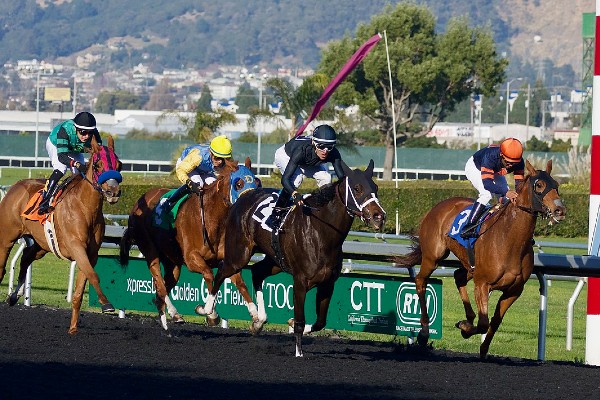 Hurdles and fences are two popular obstacles you will see in National Hunt races that run from autumn to spring.
Hurdles and fences are two popular obstacles you will see in National Hunt races that run from autumn to spring.
These obstacles exist to make the race challenging for horses and their jockeys. Although hurdles and fences are both impediments you will encounter on a racecourse; some differences make them distinct. Here are some insights into the anatomy of a racecourse; hurdles vs fences specifically.
- Rigidity And Thickness
Hurdles usually consist of one sloping face that can be knocked flat easily. However, hurdles can sometimes rebound when struck, and a swinging hurdle can occasionally catch a horse. By contrast, fences have a solid thickness of a few feet or more at the top. The back of fences is vertical with a sloping front, ensuring that they are thicker at the bottom and sturdier overall. You can bet on your preferred horse in any hurdle race or steeplechase, as long as it has a proven track record. However, betting on places each way is always worth considering to boost your winning chances, so keep this in mind.
- Arrangement
Hurdles and fences also differ in terms of their arrangement, so keep this in mind. According to the BHA, eight flights of hurdles must be in the first two miles of a race, with an extra hurdle for every additional quarter of a mile. On the other hand, the BHA stipulates that there must be twelve fences in the initial two miles of the racecourse and six every subsequent mile after that in every steeplechase course.
- Differences In Construction And Height
Fences, typically used for steeplechase races, are the higher, less yielding, and more substantial of the two obstacles. Steeplechase fences usually consist of a rigid wooden or steel frame. This steel or wooden frame is generally filled with synthetic or natural birch cut to size and bound together. Also, steeplechase fences are the highest obstacles in horse racing, and the British Horseracing Authority (BHA) stipulates that these fences must be at least 4’ 6” in height. This high height is intended to test a horse’s timing capabilities. As such, the horse and its jockey must be in sync to successfully leap fences. On the other hand, hurdles are shorter obstacles with a minimum height of 3’6”. These hurdles are made from ash, and must be uniform throughout the racecourse. They are driven into the ground side by side at a specific angle to make a flight of hurdles at least 3’1” high and 30’ wide.
- Age Of Horses
Hurdle races are typically open to horses aged three and above. In contrast, a horse has to be five or older to compete in steeplechases. Some horses start as hurdlers and become steeplechasers when they are older. Also, horses that run hurdle races often retire younger than horses that constantly jump over fences. This reality is because speed is vital to a hurdle, while horses that jump over fences require the right athleticism for the task. It is rare for a horse to have enough speed for competitive racing after age 12, so hurdlers age faster than steeplechasers.
Become a Harlem Insider!
By submitting this form, you are consenting to receive marketing emails from: . You can revoke your consent to receive emails at any time by using the SafeUnsubscribe® link, found at the bottom of every email. Emails are serviced by Constant Contact








